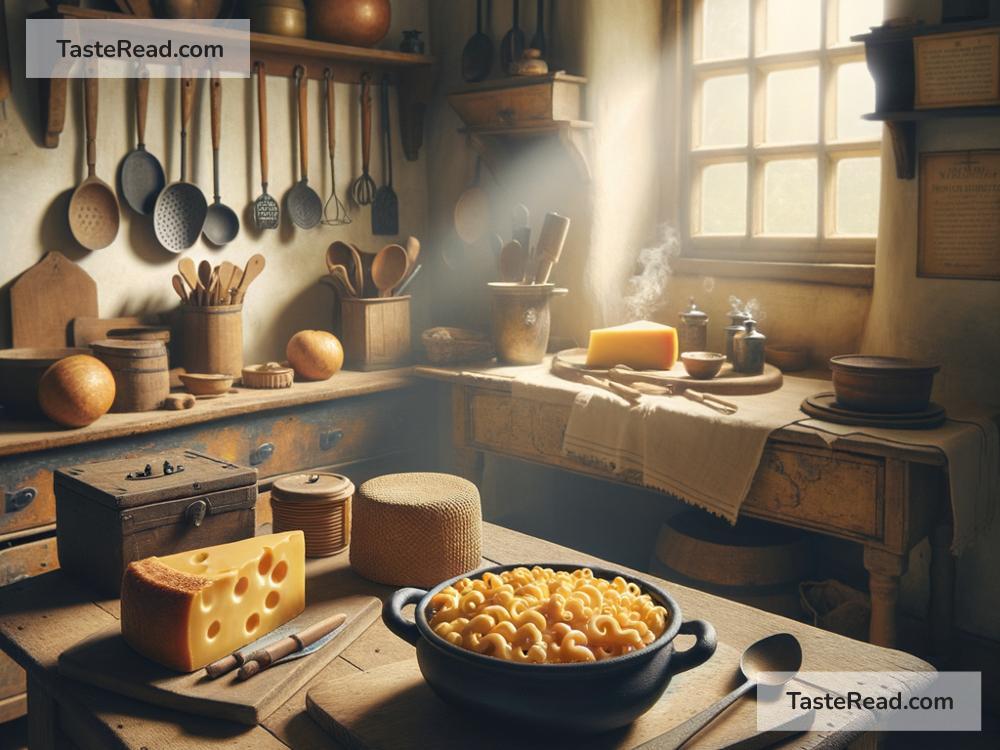The Origins of Mac and Cheese: A Delicious Tale from Folklore
Mac and cheese is one of the most loved comfort foods all around the world. Its creamy, cheesy goodness paired with soft pasta makes it irresistible. But have you ever wondered about its origins? How did this iconic dish come to be? While modern recipes have refined and standardized mac and cheese, its beginnings are filled with surprising twists, innovation, and folklore that give it a special place in culinary history.
The Humble Beginnings in Italy
The roots of macaroni and cheese can be traced back centuries ago to Italy, the birthplace of pasta. As early as the 13th century, records show that Italians were combining cooked macaroni with grated cheese to create a simple and flavorful dish. Without a doubt, Italians embraced the joy of cheese and pasta long before it became popular elsewhere.
One early recipe similar to mac and cheese is found in a medieval Italian cookbook called “Liber de Coquina,” written around the late 1200s. It describes a dish made with “de lasanis,” a type of pasta layered with grated cheese and melted butter. Though slightly different from the modern baked version we know today, this dish resembled the foundation of mac and cheese.
However, what makes mac and cheese truly unique is that it traveled far from its Italian beginnings to become a global classic, influenced by many cultures along the way.
France Gets Fancy
In the 16th century, France added its touch of elegance to the cheese and pasta combination. When Catherine de’ Medici, an Italian noblewoman, married the French King Henry II, she brought along her favorite Italian recipes, including pasta dishes. The French elevated mac and cheese with their rich sauces and unique cheeses, paving the way for a more sophisticated version.
French chefs added béchamel sauce—a creamy white sauce made with milk and flour—to macaroni and cheese recipes. Today, béchamel sauce is still a key ingredient in many versions of this dish, particularly in baked mac and cheese. The creamy texture of béchamel helped give mac and cheese the indulgent texture we associate with it now.
The Arrival in America
Mac and cheese made its way to America in the late 1700s, and there’s folklore surrounding how it arrived. One popular theory revolves around Thomas Jefferson, the third president of the United States. Jefferson spent time in France, where he became fascinated with European cooking, and he reportedly fell in love with cheesy pasta dishes.
When Jefferson returned to America, he brought pasta and Parmesan cheese back with him, along with recipes. At a state dinner in 1802, Jefferson allegedly served a dish that closely resembled mac and cheese, introducing this cheesy delight to American guests.
Another story credits Jefferson’s enslaved chef, James Hemings, for creating versions of European dishes that were adapted for American tastes. Hemings trained as a chef in France and might have been instrumental in integrating mac and cheese into American cuisine. While the exact details are unclear, folklore suggests that Jefferson and Hemings played a role in popularizing cheesy pasta dishes on American soil.
The Industrial Revolution: Mac and Cheese for Everyone
As time passed, mac and cheese evolved from a luxury enjoyed by the wealthy to a dish accessible to everyone. During the Industrial Revolution, pasta production became faster and cheaper, which meant it could be made and sold in larger quantities. Cheese also became easier to produce and distribute, making the ingredients more affordable for families across the country.
Then, in 1937, mac and cheese took on a whole new level of fame when Kraft introduced its boxed mac and cheese to the world. The product was easy to prepare, affordable, and perfect for busy families. During challenging times like the Great Depression and World War II, Kraft mac and cheese became a staple in American households. It provided a convenient way to enjoy a hearty meal with minimal effort.
Since then, mac and cheese has become a cultural icon. Whether it’s baked in a casserole, prepared from scratch, or made straight from the box, it’s loved by people of all ages and walks of life.
Folklore and Fun Stories
In many cultures, food is more than just sustenance—it’s also a part of storytelling and tradition. Over time, mac and cheese has gained some fun and quirky folklore. For example, in Scotland, there’s a tale about macaroni pies made by resourceful cooks during hard winters to stretch their food supplies. These pies included leftover macaroni mixed with cheese and baked in pastry.
In America’s Southern states, mac and cheese took on a special role in soul food traditions. Folklore suggests that enslaved cooks used creative methods to make mac and cheese feel special despite limited resources, often incorporating rich flavors like smoked cheese or spices.
A Dish Loved by All
Today, mac and cheese is enjoyed across the globe with endless variations. From lobster mac and cheese in upscale restaurants to vegan mac and cheese made with plant-based ingredients, this dish has proven its versatility. But one thing remains consistent: the comforting, heartwarming feeling that mac and cheese brings.
While we may never know all the true stories behind its origins, mac and cheese carries a sense of nostalgia and joy no matter where it’s eaten. Whether you’re cooking a family recipe passed down through generations or grabbing a box off the shelf for a quick meal, mac and cheese reminds us of the beauty of simple, satisfying food.
So the next time you dig into a plate of cheesy goodness, take a moment to reflect on its rich history and the folklore that helped it become the beloved dish we know today. After all, every bite tells a story!


